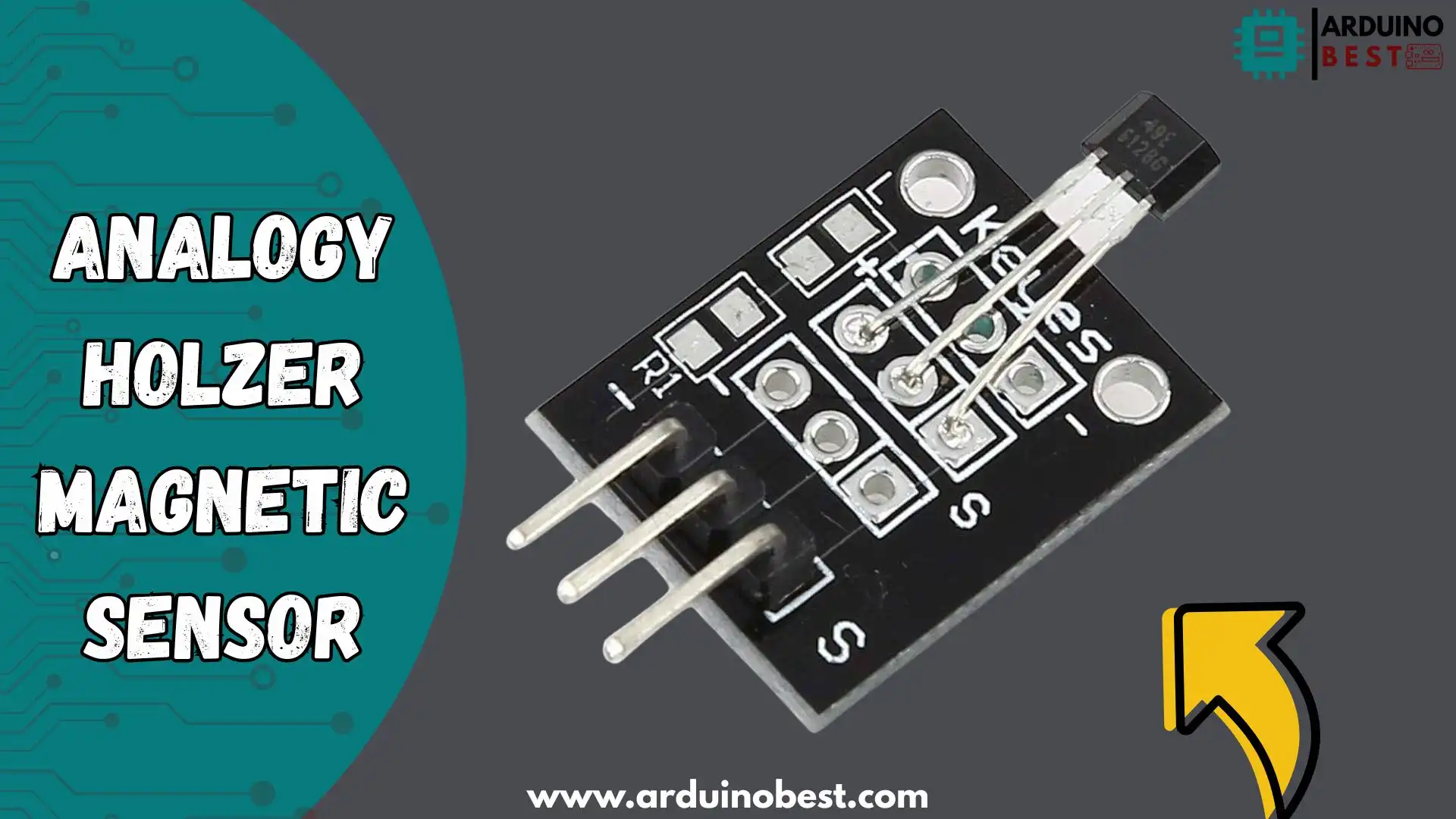Table of Contents
1. Introduction to Analog Holzer Magnetic Sensors
Analog Holzer magnetic sensors are essential components in modern electronics that measure magnetic fields and convert them into analog electrical signals. They are widely used in various applications, including automotive systems, industrial equipment, robotics, and more. These sensors operate based on the Holzer effect, a phenomenon that allows them to detect magnetic fields and generate a proportional output.
These sensors offer several advantages, such as high sensitivity, low power consumption, and accuracy, making them ideal for use in devices that require precise position or speed measurements. To understand their importance and functionality better, let’s explore how these sensors work in detail and discuss some of their applications.
For an in-depth look at the Holzer effect, check out this resource: Introduction to the Holzer Effect.
2. How Analog Holzer Magnetic Sensors Work
At the core of an analog Holzer magnetic sensor is a semiconductor that exhibits a voltage output in response to the magnetic field. When a magnetic field is applied, it interacts with the sensor’s material and induces a voltage that is proportional to the strength and direction of the magnetic field. This allows the sensor to output an analog signal that represents the magnetic field intensity, which can then be used by a microcontroller or other electronic systems.
Working Principle
- Holzer Effect: The primary principle behind these sensors is the Holzer effect, which describes the generation of a voltage perpendicular to both the magnetic field and the current flow within the sensor.
- Voltage Output: The sensor typically provides a voltage output that corresponds directly to the magnitude of the magnetic field.
- Signal Processing: The analog signal can be processed by external circuits, such as microcontrollers or ADCs (Analog-to-Digital Converters), to measure magnetic field strength or position.
Types of Magnetic Fields Detected
- Linear Fields: These sensors can detect magnetic fields along a straight line or axis, often used in applications like position sensing.
- Rotary Fields: Rotary sensors, which are also part of the Holzer sensor family, are used to measure rotational position or speed, especially in motors.
To explore how these sensors can be integrated into electronic systems, take a look at Interfacing Analog Sensors with Microcontrollers.
3. Types of Analog Holzer Magnetic Sensors
Analog Holzer magnetic sensors come in different configurations to suit specific applications. The main types are:
1. Linear Holzer Sensors
- Purpose: These sensors measure magnetic field strength along a linear axis.
- Applications: Position sensing in linear motion systems, such as in linear actuators or carriage positioning in machines.
2. Rotary Holzer Sensors
- Purpose: Rotary Holzer sensors are designed to measure rotational movement.
- Applications: These are commonly used for measuring the rotational position or speed in applications like motor control systems or wheel speed sensors in vehicles.
3. Bipolar and Unipolar Sensors
- Bipolar Sensors: These sensors respond to both north and south magnetic poles.
- Unipolar Sensors: They respond only to one polarity, typically north or south.
4. Applications of Analog Holzer Magnetic Sensors
Analog Holzer magnetic sensors have broad applications across various industries due to their versatility and reliability.
Automotive Industry
- Wheel speed sensors: They are used in anti-lock braking systems (ABS) to monitor the speed of wheels.
- Position sensors: In automotive applications, these sensors are used for measuring throttle position and gear position.
Robotics
- Rotary position sensors: Holzer magnetic sensors can be used to detect the angle of joints or rotational positions in robotic arms or other machinery.
Industrial Applications
- Motor control systems: Used for precise motor position feedback, improving efficiency and accuracy.
- Proximity sensors: Detecting the presence of metal or magnetic objects.
Consumer Electronics
- Smartphones: These sensors are used to measure the orientation of the phone.
- Wearable devices: Magnetic sensors can be integrated into fitness trackers and other wearables.
5. Advantages of Analog Holzer Magnetic Sensors
Analog Holzer magnetic sensors offer several benefits, making them an attractive choice for many applications:
- High Accuracy: These sensors provide precise measurements, making them ideal for applications that require high precision.
- Low Power Consumption: Holzer sensors are energy-efficient, contributing to the longevity of battery-powered devices.
- Cost-Effective: Compared to other sensor types, Holzer magnetic sensors are relatively inexpensive and provide excellent value for money.
- Robustness: These sensors are designed to function in harsh environments, such as extreme temperatures or high humidity levels.
- Easy Integration: They are compatible with many microcontrollers, making them easy to interface with systems like Arduino and Raspberry Pi.
6. Interfacing Analog Holzer Magnetic Sensors with Microcontrollers
Integrating analog Holzer magnetic sensors into microcontroller-based projects is straightforward. Here’s a general guide:
Wiring and Pin Configuration
- Connect the Vcc and Ground pins of the sensor to the power supply.
- The output pin from the sensor can be connected to an ADC (Analog-to-Digital Converter) pin on the microcontroller.
- The sensor’s output voltage will correspond to the magnetic field strength, which can be read by the microcontroller.
Code Example for Arduino
int sensorPin = A0; // Analog pin connected to sensor output
int sensorValue = 0; // Variable to store sensor reading
void setup() {
Serial.begin(9600);
}
void loop() {
sensorValue = analogRead(sensorPin); // Read the analog input
Serial.println(sensorValue); // Output the reading to Serial Monitor
delay(100);
}
By interfacing Holzer magnetic sensors with platforms like Arduino, you can easily integrate them into DIY projects and applications.
7. Challenges and Limitations of Analog Holzer Magnetic Sensors
While analog Holzer magnetic sensors are useful in many applications, they do come with some limitations:
- Sensitivity to Noise: These sensors may be affected by external electrical noise, which can cause inaccurate readings.
- Limited Detection Range: The distance over which they can effectively detect magnetic fields is limited.
- Environmental Sensitivity: Temperature variations or humidity can affect sensor performance, requiring calibration.
8. Troubleshooting Analog Holzer Magnetic Sensors
If you’re experiencing issues with your sensor, here are a few common problems and solutions:
- No Output Signal: Check the wiring and ensure the sensor is receiving proper power.
- Erratic Readings: Consider shielding the sensor from electrical noise, or check if recalibration is needed.
- Low Sensitivity: Ensure the sensor is within the required range of the magnetic field.
9. Future Trends in Analog Holzer Magnetic Sensor Technology
The future of analog Holzer magnetic sensors looks promising with advancements such as:
- Miniaturization: Future sensors will become even smaller, enabling integration into more compact devices.
- Integration with IoT: With the rise of the Internet of Things, these sensors are being integrated into connected systems for smarter devices.
- AI Integration: Holzer sensors may be combined with artificial intelligence to enhance accuracy and functionality in robotics, automation, and automotive applications.
10. FAQs
- What is the Holzer effect?
- The Holzer effect refers to the generation of a voltage in a material when exposed to a magnetic field.
- How accurate are Analog Holzer Magnetic Sensors?
- These sensors are known for their high accuracy, making them suitable for precision measurements in various applications.
- Can these sensors be used in high-temperature environments?
- Yes, many Holzer magnetic sensors are designed to work in harsh environments, including high-temperature settings.
- What are the differences between analog and digital Holzer sensors?
- Analog Holzer sensors provide continuous voltage outputs, while digital sensors give discrete on/off outputs based on magnetic field thresholds.
- How do you calibrate an Analog Holzer Magnetic Sensor?
- Calibration typically involves adjusting the sensor’s output to match a known magnetic field strength, using calibration equipment.
Conclusion
In conclusion, Analog Holzer magnetic sensors are vital components in modern electronics, providing precise and reliable solutions for measuring and detecting magnetic fields. Their versatility makes them ideal for a wide range of applications, including automotive systems, robotics, industrial automation, and consumer electronics. By understanding the underlying Holzer effect and exploring different sensor types, you can effectively incorporate them into your designs and projects. Additionally, mastering proper integration, calibration, and troubleshooting techniques will help you fully harness the capabilities of these sensors. Whether you’re building a system for position sensing, speed detection, or current measurement, the Analog Holzer magnetic sensor proves to be an invaluable tool, ensuring the accuracy and efficiency of your designs. With the continuous advancement of sensor technologies, the future of magnetic field sensing looks promising, offering even more opportunities for innovation and development.
For more detailed guides, check out Interfacing Analog Sensors with Microcontrollers.
Arduino Projects:
1- Complete Guide for DHT11/DHT22 Humidity and Temperature Sensor With Arduino
2- DHT11 – Temperature and Humidity Sensor
3- DHT22 – Temperature and Humidity Sensor (more accurate than DHT11)
4- BMP180 – Barometric Pressure and Altitude Sensor
5- BMP280 – Barometric Pressure & Temperature Sensor
6- BME280 – Temperature, Humidity, and Pressure Sensor
7- Arduino Flex Sensor Controlled Robot Hand
8- Arduino ECG Heart Rate Monitor AD8232 Demo
9- Arduino NRF24L01 Wireless Joystick Robot Car
10- Arduino Force Sensor Anti-Theft Alarm System
11- Arduino NRF24L01 Transceiver Controlled Relay Light
12- Arduino Rotary Encoder Controlled LEDs: A Complete Guide

